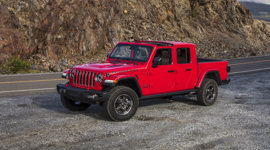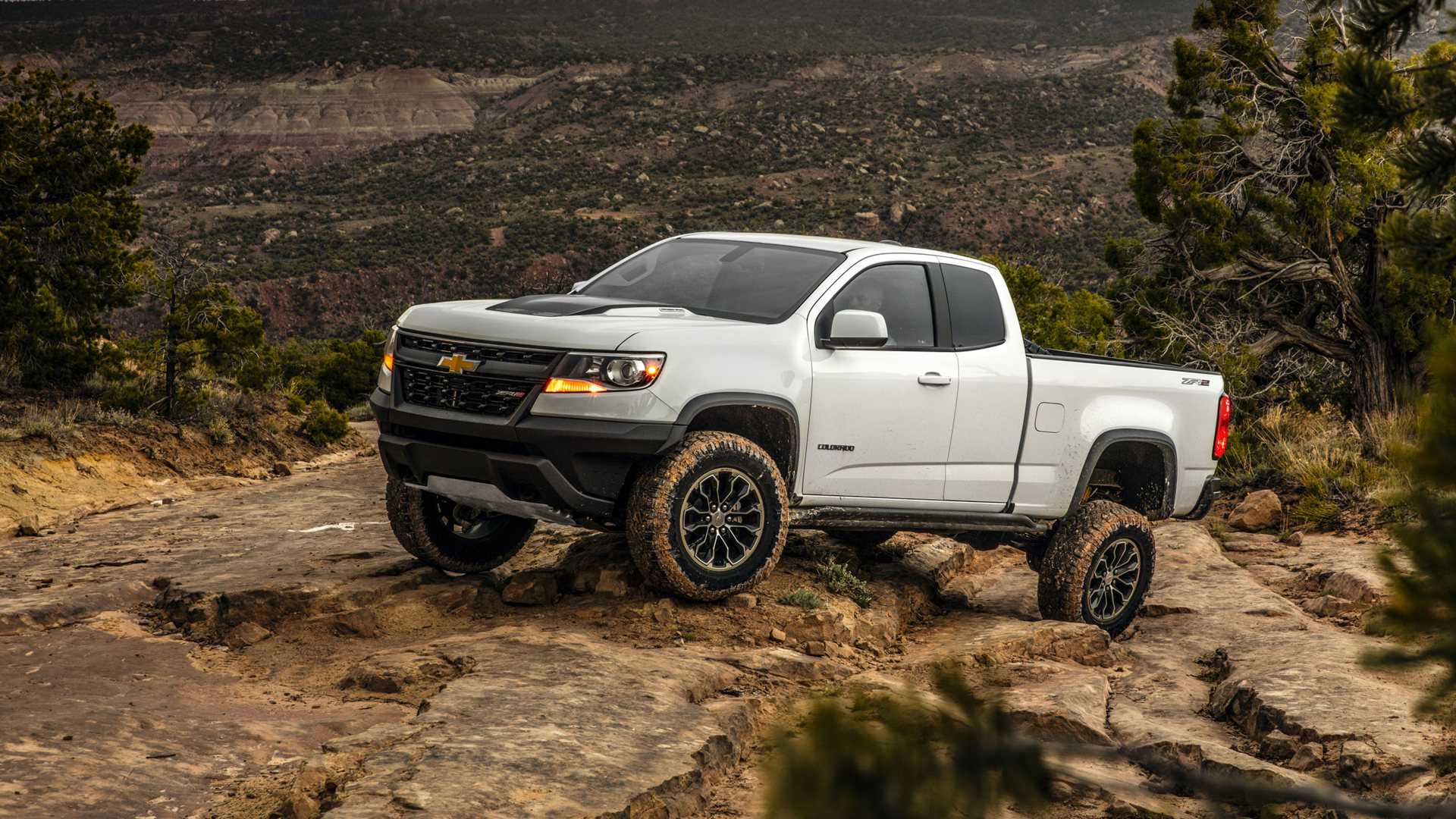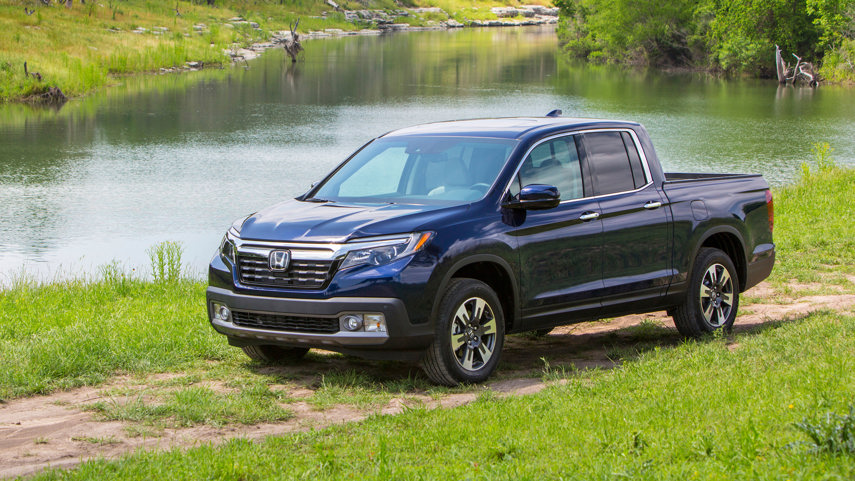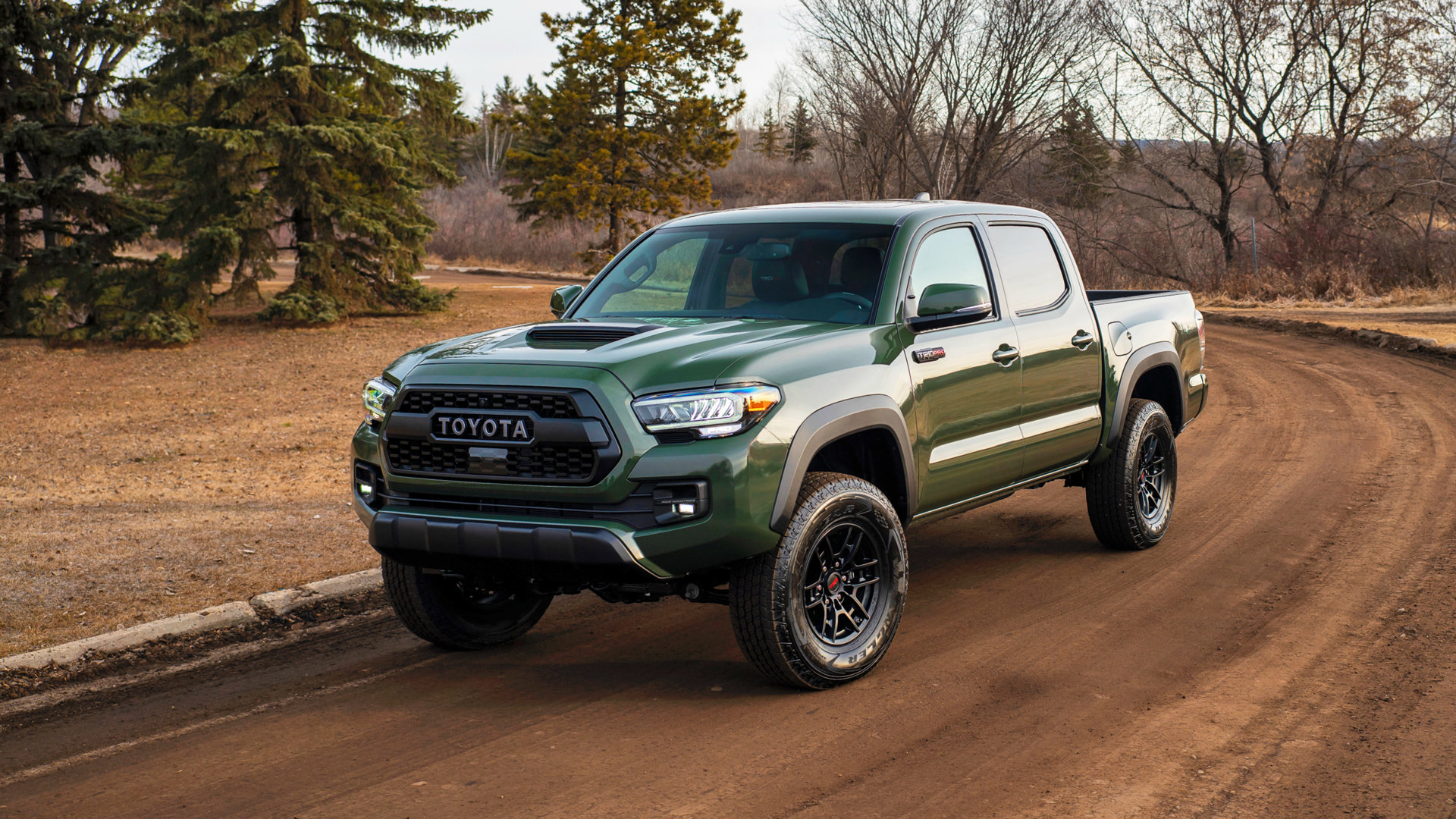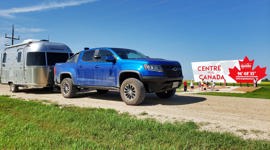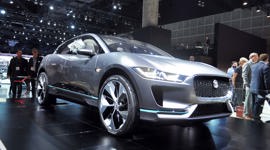As full-size trucks increasingly bulk up, some buyers are turning to midsize models. For many owners, these smaller trucks are often more than capable enough to do the job, all while taking up less space in tight quarters and in parking lots.
Our team of more than 20 automotive experts considered all new midsize truck models available to Canadians to buy in 2020 and voted to shortlist these finalists: the Chevrolet Colorado, Ford Ranger, Honda Ridgeline, Jeep Gladiator, and Toyota Tacoma. Our jury will assess all the finalists using 12 different criteria to vote on a winner, a truck they would confidently recommend to their friends and family, or even park in their own driveways.
That’s a tough task, because truck buyers are a diverse group – some work their trucks hard, while others just prefer trucks to cars. It’s even tougher because, in comparison to full-size models, midsize trucks don’t always scale down consistently. Top trim levels can often overlap the entry price of full-size, while a truck that’s half the size seldom achieves exactly half the fuel economy of its bigger brethren.
We’re taking all that into account, along with each truck’s engine performance and driving feel, comfort, features, and value for the price, with a heavier weighting on off-road capability and towing/hauling capability to vote on a winner. One truck takes the midsize crown, and we’ll announce it along with all our award winners on January 20, 2020.
Here is some more information about our finalists.
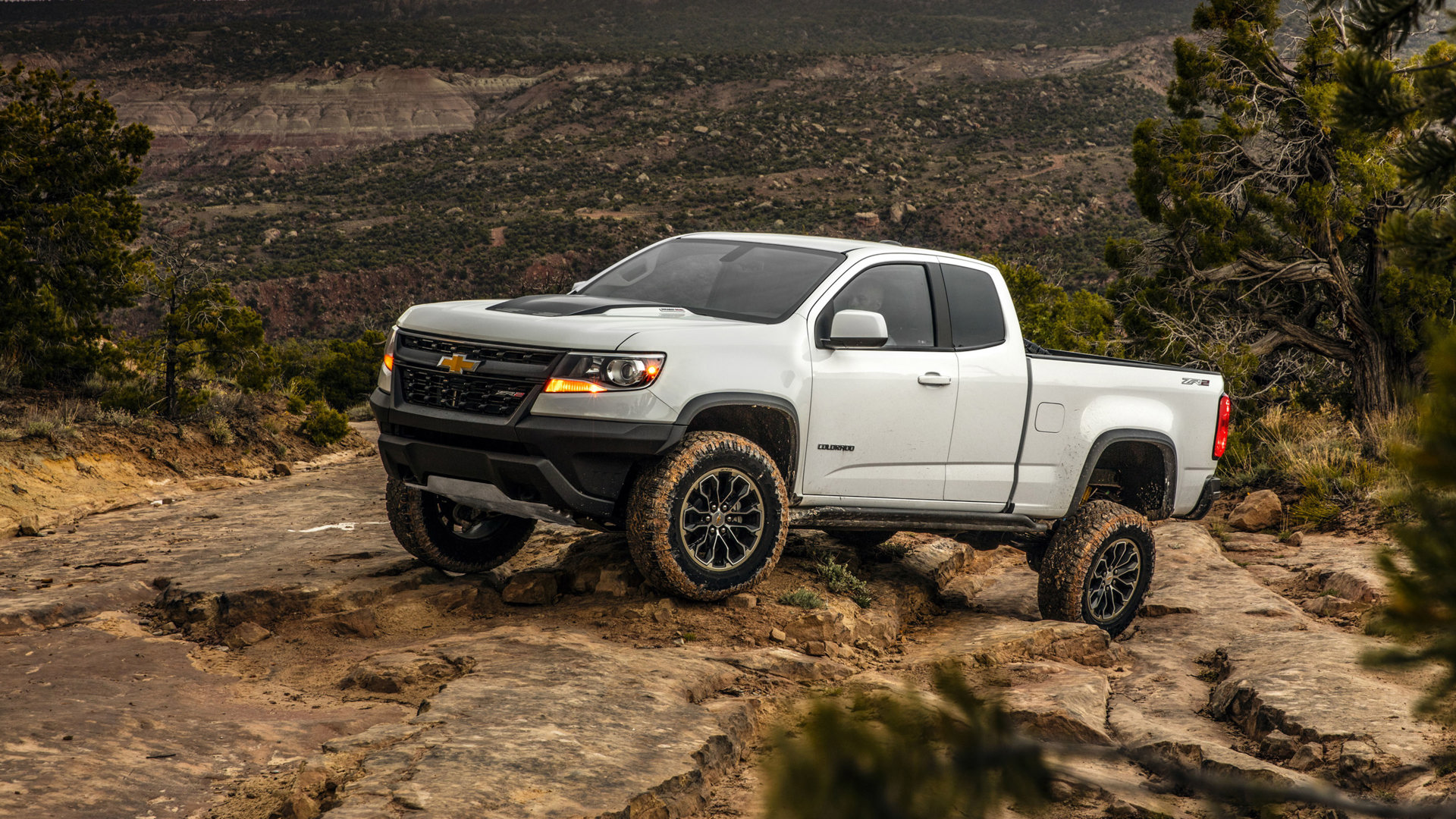
Chevrolet Colorado
The Colorado comes as an Extended Cab, or as a Crew Cab with two bed lengths. There are three engine options: a 2.5L four-cylinder with six-speed manual or six-speed automatic transmission; a 3.6L V6 with eight-speed automatic; and a 2.8L four-cylinder diesel that makes 186 horsepower and 369 lb-ft of torque, mated to a six-speed automatic. The Colorado and its GMC Canyon mechanical twin offer the only diesel engine in the segment, which is great for pulling power and fuel efficiency.
Equipped with the diesel, the Colorado can tow up to 7,700 lbs, top among our finalists, although the engine is a pricey add-on.
The Colorado comes in 2WD or 4WD. Regular models come in three trim levels, and there’s also the ZR2, a hardcore and very capable off-roader that uses the V6 or the diesel. It adds wider front and rear tracks, lifted suspension, locking differentials, dynamic dampers, and rock sliders, along with some aggressive styling cues.
The Colorado has a fairly plain cabin but it’s function over form, with simple controls and an intuitive infotainment that includes a Wi-Fi hotspot. It’s comfortable, with an upright seating position and sufficient rear-seat legroom, and the rear seats fold down, or lift up to reveal hidden cargo bins. The bed won’t hold as much as with a full-size truck, of course, but the sides have indentations to fit a platform, creating two tiers for a load.
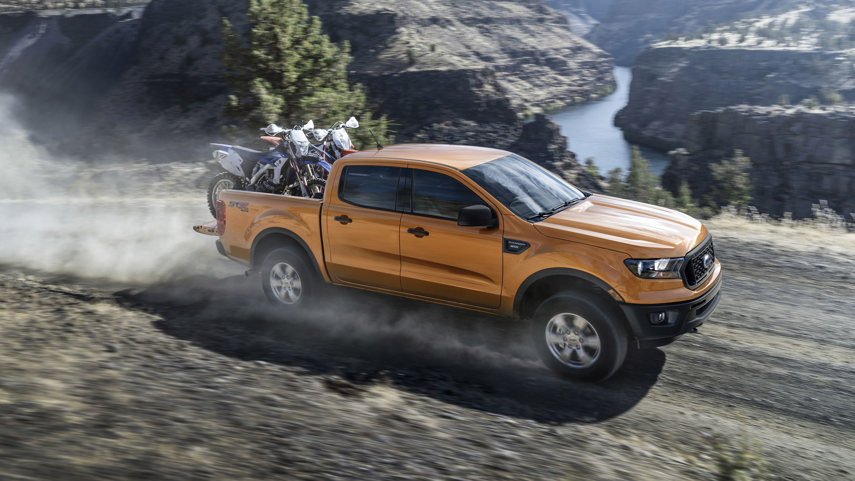
Ford Ranger
Having made its debut for 2019, the new Ranger shares nothing with Ford’s old version, other than its name. It uses a turbocharged 2.3L EcoBoost four-cylinder engine that includes idle-stop (which shuts it off when you’re sitting at a light), making 270 horsepower and 310 lb-ft of torque, and mated to a 10-speed automatic transmission. In Canada, the Ranger comes standard with a 4WD configuration, and 2WD isn’t even offered.
It’s available as a SuperCab with six-foot bed, or SuperCrew with five-foot bed, with two trim levels for each configuration. Towing capacity tops out at 7,500 lbs, and its 1,650-lb payload is the highest among our finalists.
The Ranger’s cabin styling is livelier than that of the Colorado, with a dash design that draws some of its lines and accents from the full-size F-150. Controls are simple in the lower trim levels, but can get a bit small and fiddly in the upper ones. The infotainment system is powered by Ford’s SYNC 3 system, with available navigation, Wi-Fi hotspot, and smartphone integration. At the top level, the Ranger includes heated leather seats, auto-dimming mirror, and blind spot monitoring that includes the length of a trailer.
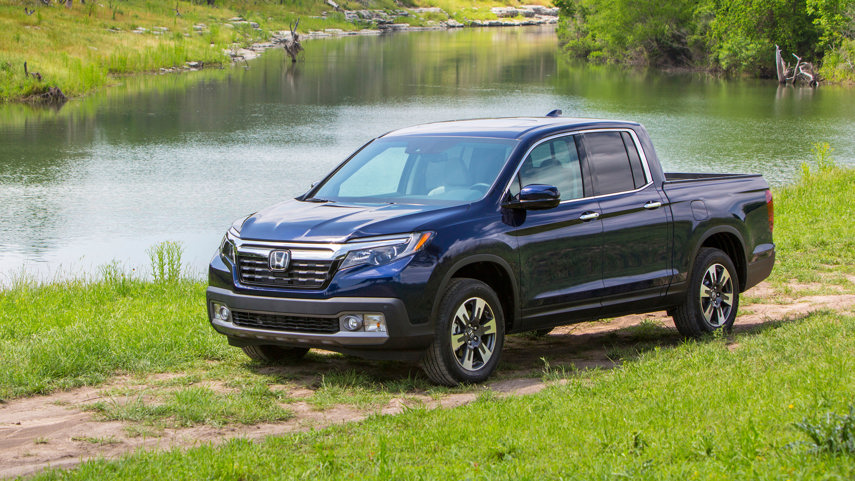
Honda Ridgeline
The Ridgeline can be controversial because a lot of hardcore truck fans don’t think Honda’s entry really is a truck. They’re wrong. For lighter-duty needs, it can be exactly the right truck for the job.
While everything else in the midsize segment is body-on-frame, the Ridgeline is a unibody. Its full-time AWD system primarily powers the front wheels, sending up to 70 per cent of torque to the rear as needed and then dividing it between the left and right tires for better handling (and surprisingly decent off-road ability). It’s powered by a 3.5L V6 making 280 horsepower and 262 lb-ft of torque, and which shuts off cylinders for better fuel efficiency when full power isn’t needed. A six-speed automatic transmission rounds it out.
Towing capacity is 5,000 lbs, the lowest among our finalists, but payload is around the middle at 1,572 lbs. A huge bonus with the Ridgeline is its useful storage configuration. It has a huge centre console and folding rear seats with legs that let you slide cargo under them. Its composite bed is dent- and rust-resistant, and hidden under it is a 207L locking box with drain plugs, so you can use it as a cooler – and on the upper trims, there are speakers behind the bed sides for your tailgate party. Speaking of tailgates, the Ridgeline’s is dual-action, dropping down conventionally, or opening sideways like a door, so you don’t have to reach across it to access your cargo.
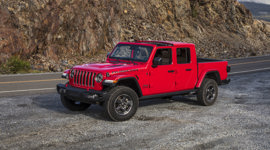
Jeep Gladiator
An all-new model for 2020, the Gladiator is not just a Jeep Wrangler with a box in the back; it rides on a unique frame and with a different rear suspension. It’s powered by a 3.6L V6 making 285 horsepower and 260 lb-ft of torque, with idle-stop, and with a six-speed manual or eight-speed automatic. A 3.0L V6 diesel will be added for next year, but not in time for us to test and evaluate it for this year’s awards.
The Gladiator comes in three trim levels, all with standard 4WD, and as with the Wrangler, one of them is the hardcore Rubicon off-roader. It includes front and rear locking differentials, electronically disconnecting front sway bar, limited-slip differential, Fox monotube shocks, rock rails, and 4.10:1 low-gear ratio.
It comes only as a Crew Cab with five-foot bed, so there aren’t as many configurations as some our other finalists. Maximum towing capacity comes in just under the Colorado at 7,650 lbs, and its 1,650-lb payload is second only to the Ranger. It’ll do the work, but the Gladiator primarily functions as a lifestyle truck. As with the Wrangler, the doors come off, the windshield folds down, and it can shed its roof, with soft top or hardtop options – and once you’re at your campsite, the audio options include a removable wireless speaker.
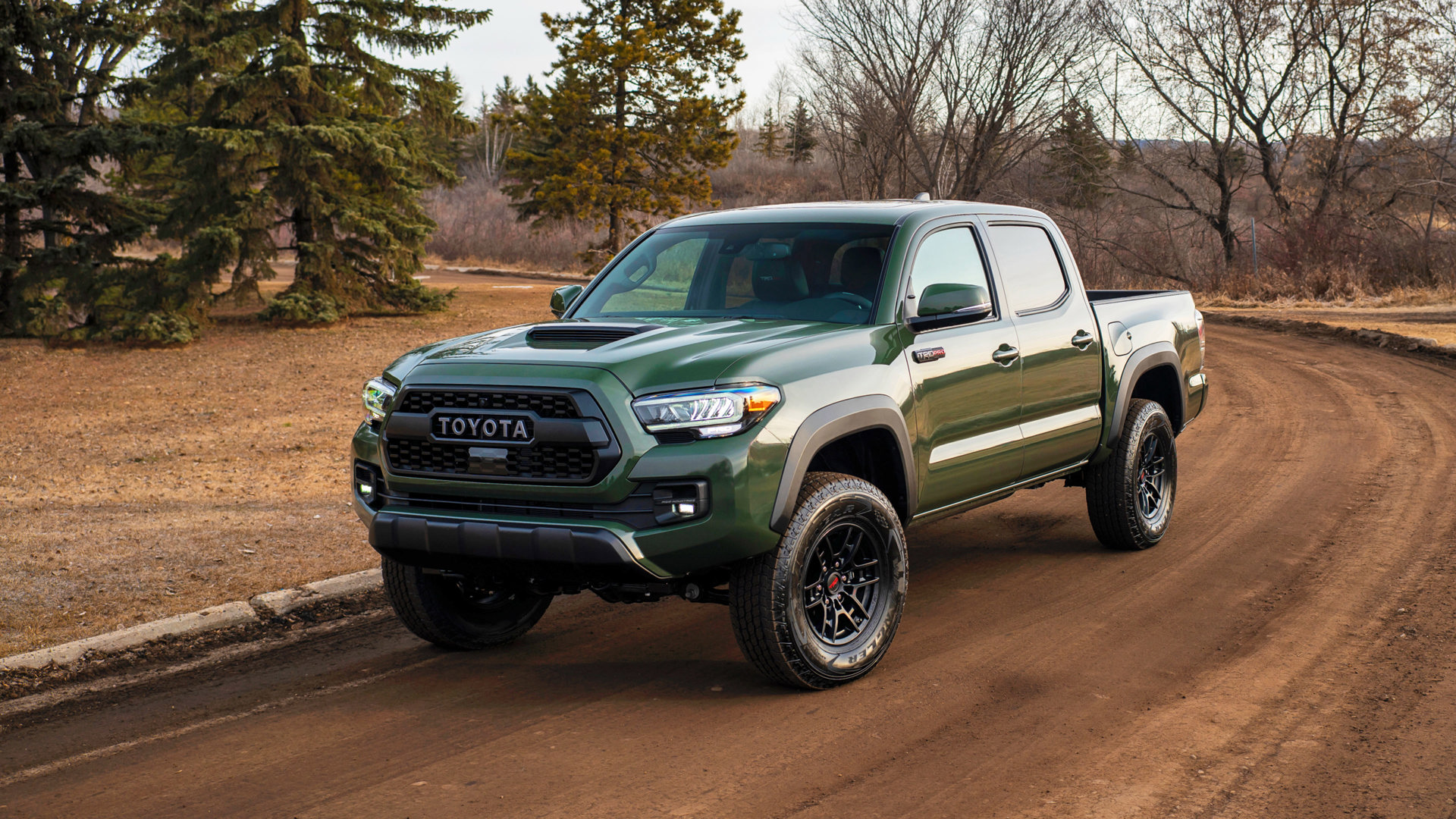
Toyota Tacoma
By far and away, the Tacoma is the bestselling midsize truck in Canada. It moves into 2020 with a few upgrades to its features list, adding a larger touchscreen, more connectivity, a power seat and new grille design to some of the trim levels.
It comes in Access Cab, in 2WD and 4WD, and in Double Cab with 4WD only. For 2020, the 2.7L four-cylinder engine has been dropped. All Tacomas are now powered by a 3.5L V6 that makes 278 horsepower and 265 lb-ft of torque, with six-speed manual or six-speed automatic transmission. Towing capacity tops out at 6,500 lbs, and payload at 1,500 lbs.
Midsize trucks are better suited for tight trails than full-size models are, and Toyota gets fans away from the pavement with a TRD Off-Road Package. The ultimate step up from that is the TRD Pro, a pricey package that includes locking rear differential, four-corner Fox internal bypass shocks, remote reservoir suspension kit, and a snorkel-style intake that pulls in fresh air at roof height, to avoid sucking in dust on dirt roads.
The seats are close to the floor, which may be uncomfortable for some drivers, but the Tacoma’s cabin includes straightforward styling, intuitive controls, and storage bins hidden under the rear seats. All trim levels include adaptive cruise control, emergency braking with pedestrian detection, lane departure warning, and automatic high-beam headlamps.
